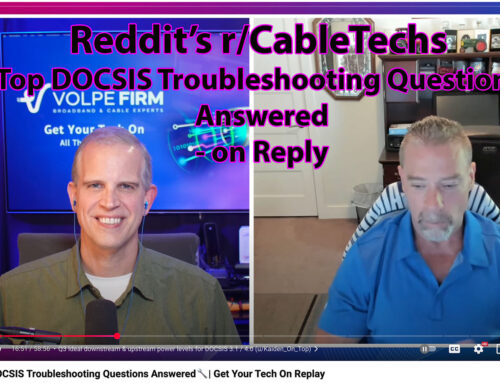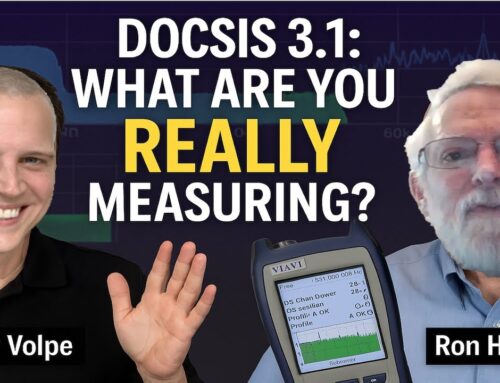DOCSIS Reboot…
Everybody is talking about DOCSIS 3.1 and the technology surrounding it. In the coming months I will cover both the emerging technology of DOCSIS and how it impacts our careers, our subscribers and our industry with a focus on DOCSIS 3.1. This is an opportunity to discuss both the technical aspects of the DOCSIS specifications and then discuss the impacts.
As an example, when we first introduced quality of service (QoS) in the DOCSIS 1.1 specification there were a lot of items that were not quite tangible. Sure we understood fundamentally that some traffic would be prioritized above other traffic, but even today many do not really understand the mechanics behind it. What is interesting is how QoS enabled VoIP to change the landscape for DOCSIS and put us in direct competition with telecom operators. Still today cable operators – especially smaller rural ones – are in the early stages of deploying VoIP for the first time.
In DOCSIS 3.1 we are replacing the familiar Reed Solomon error correction method with Low Density Parity Check (LDPC). Alphabet soup right? You’re likely familiar with Reed Solomon as you’ve been monitoring correctable and uncorrectable codeword errors to ensure good quality of experience (QoE) for your subscribers. Reed Solomon error correction was developed by Irving Reed and Gustave Solomon back in 1960. We have been using Reed’s and Solomon’s error correction methods to fix small errors in data during RF transmissions by the cable modem since the very first DOCSIS cable modem was created. It has worked really well for us so far. However, Robert Gallager developed an even more robust error correction algorithm just three years after Reed & Solomon in 1963 called LDPC (Low Density Parity Check). Gallager’s algorithm was really powerful, but at the time it was considered “too impractical” to use because there was no supercomputer powerful enough to run the calculations needed to fix errors in data transmissions. Today that supercomputer is just a small dot on the cable modem’s silicon wafer and LDPC is a reality. LDPC works much better than Reed Solomon error correction. It works so good that we believe we can run 1024-QAM on the same HFC plant that we are currently running 256-QAM on without making any changes. This is one way that we can make DOCSIS 3.1 a reality in the near future. So thank you Mr. Gallager, we appreciate your contribution to the cable industry.
The landscape is quickly changing. VoIP is becoming an app. The cable modem is an interface to WiFi into the connected home. DOCSIS is expected to do gigabit speeds. Nearly every aspect of what we do is being altered to accommodate a technology that did not exist 20 years ago, but DOCSIS is quickly becoming the life line of our industry. How are we expected to keep up? That is simple. We keep reading. We keep learning. We keep training. It is the cable way and more resources are available to us than at any time before. These are exciting times and I look forward to discuss these topics with you during each issue of Broadband Library.
When Cathy Wilson, publisher of Broadband Library approached me about writing a quarterly column I was honored and very excited to do so. People are always telling me that it takes tremendous skill to keep up and understand our changing technology. But what I find most important is the ability to successfully communicate this knowledge so others will benefit and learn from it as well.
Upcoming events can be seen under Broadband Events. Previous events can be seen under the blog.
- If you watch on youtube please hit the subscribe button!
- Let us know what you think and remember to share!
- You can find slides at the bottom of the page and some on slideshare.
- Find out about events or articles by following us on Twitter, LinkedIn or Facebook too.
Also available on iTunes, Google Podcasts, Spotify, vurbl see podcasts “get your tech on”.





Leave a Reply